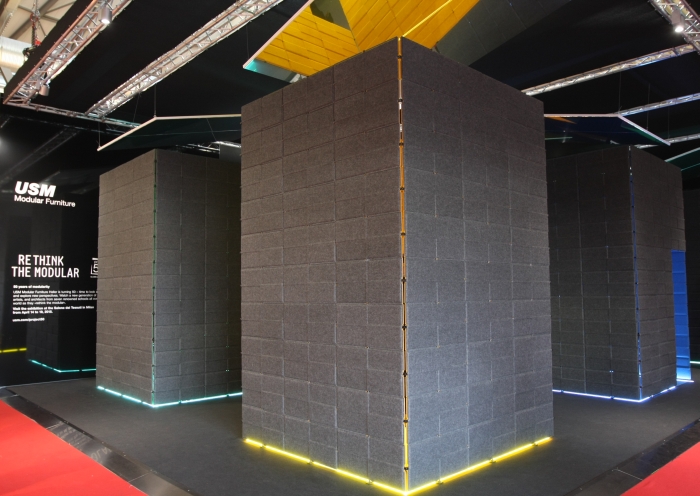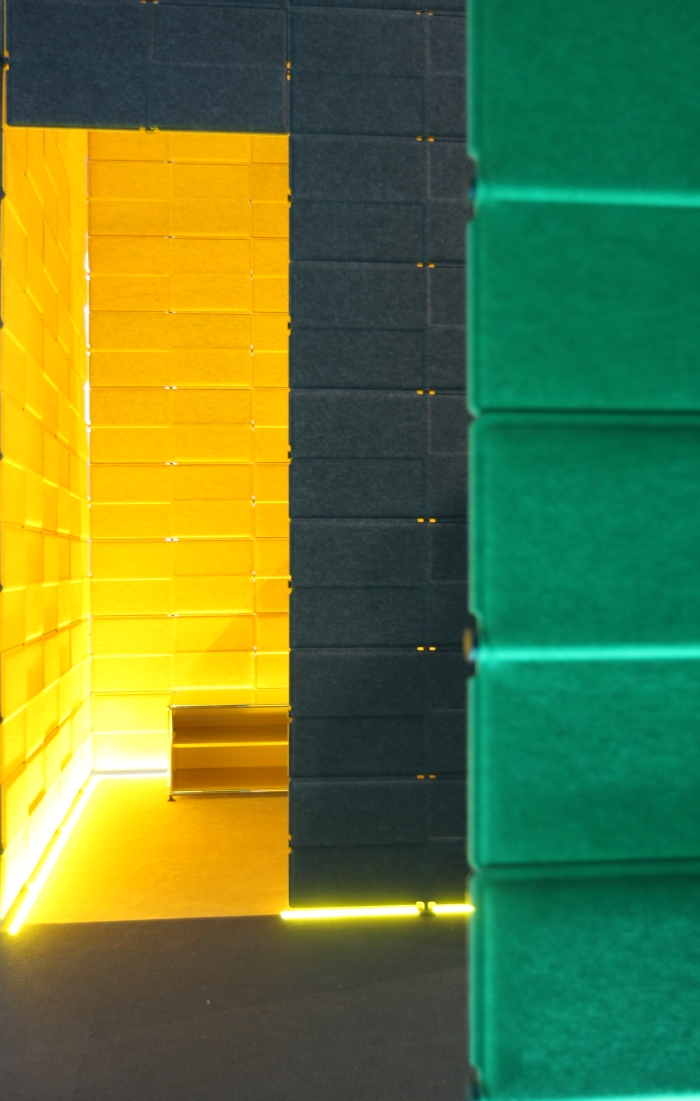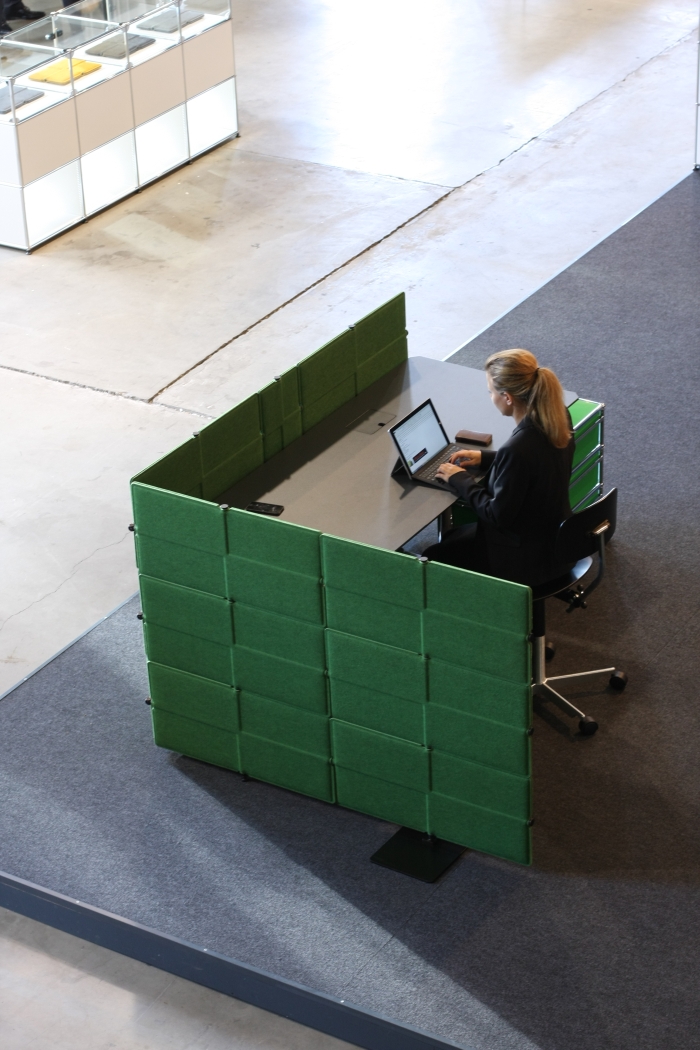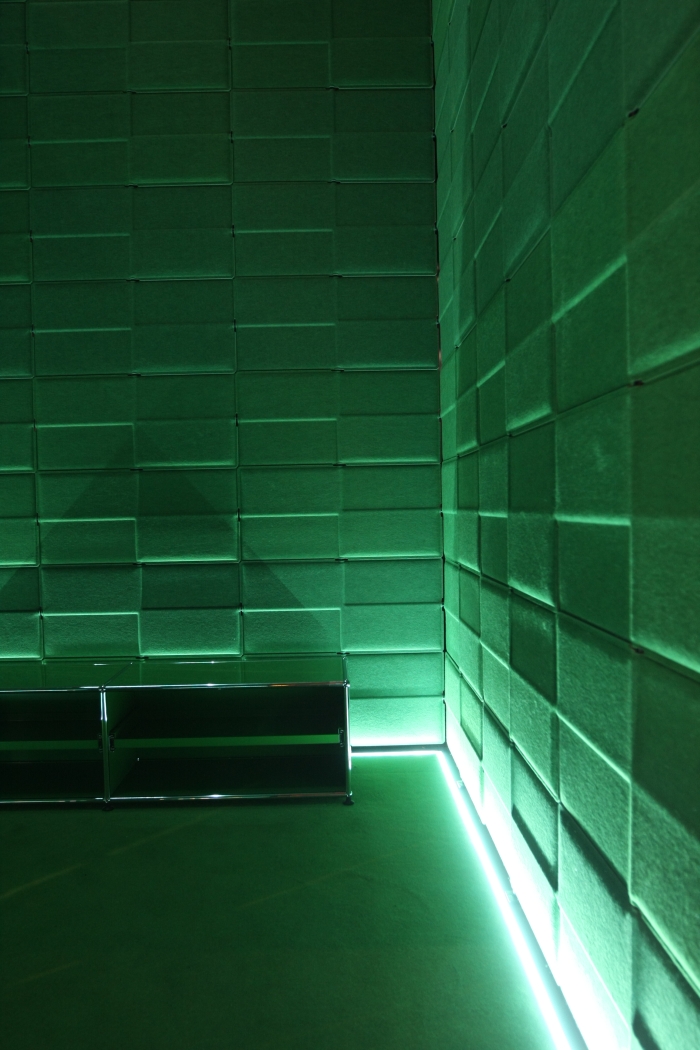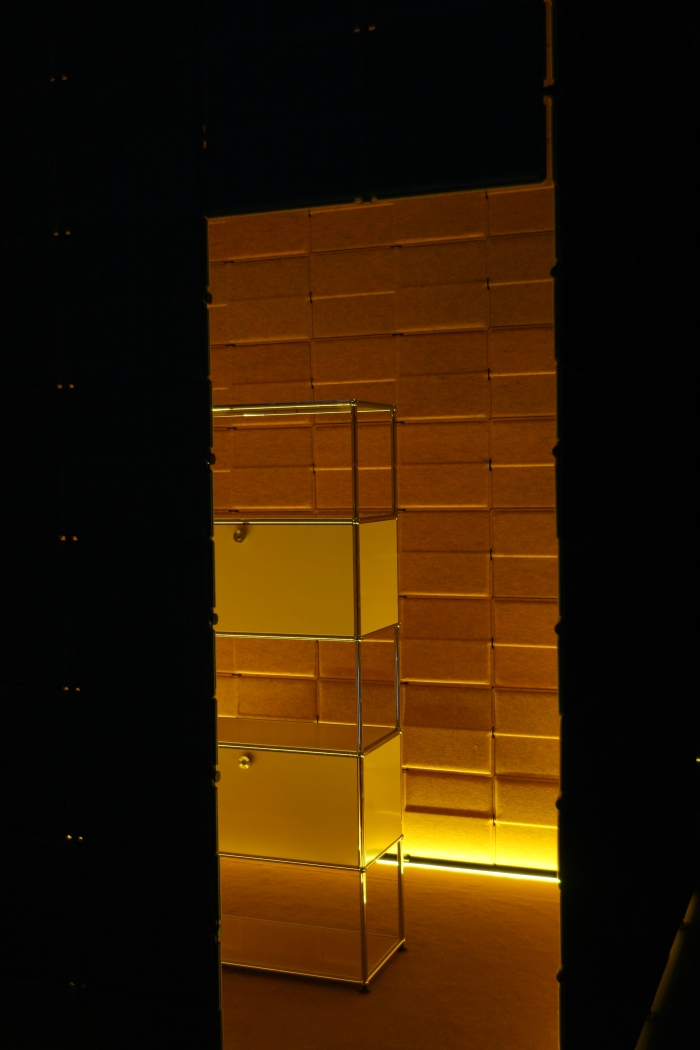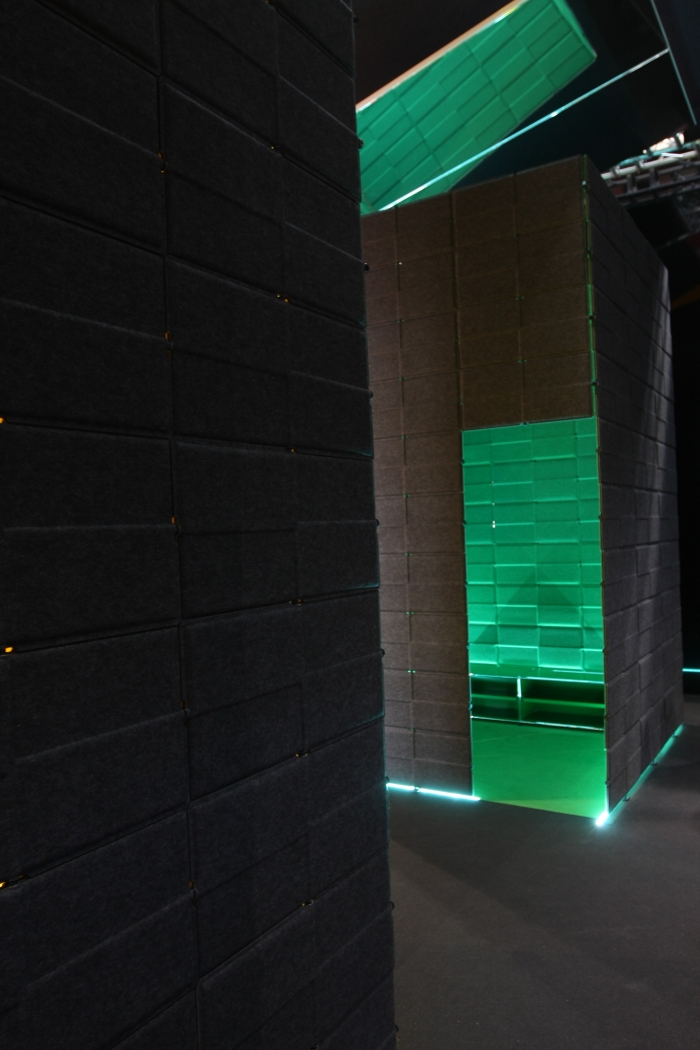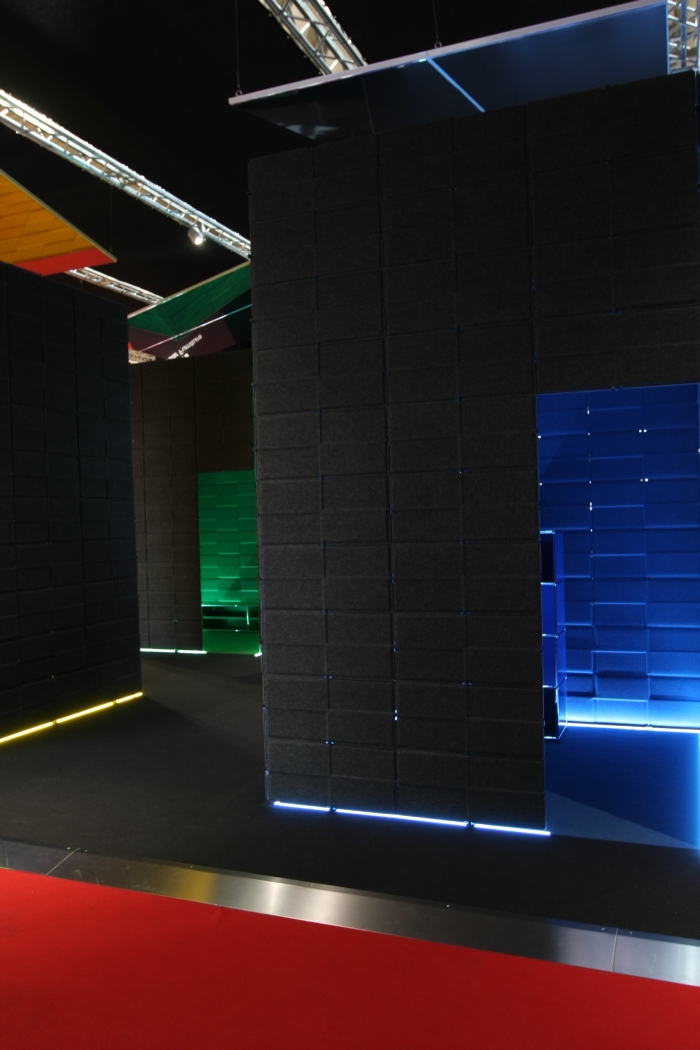Designer | Exhibitions and Shows | Fuorisalone | Fuorisalone Milan Design Week | Milan Design Week | Office Furniture | Producer | Product | USM Haller
For reasons far too abstract, intangible, and potentially libellous, to go into, we didn't report on the inaugural presentation of USM's new Privacy Panels staged during Orgatec Cologne 2014.
Fortunately, and no doubt buoyed by the success of the Cologne presentation, USM are also presenting the Privacy Panels in Milan.
When Fritz Haller developed his modular office furniture system for USM it's ability to divide internal spaces in a responsive and functional yet reduced and unobtrusive manner instantly caught the imagination of architects and interior designers looking to create open plan offices as a counter to the individual cubicle concepts that developed parallel in America.
The problem of course with open plan offices is that one not only has difficulty creating areas of privacy, but acoustic drift can cause problems. Then such considerations were principally centred around the distractions caused by telephoning colleagues and the click click ring of typewriters; annoying but bearable. Now such considerations are principally centred around the distractions caused by telephoning colleagues, (spontaneous) team meetings, social media campaign analysis, skype conferences, sushi, etc.; annoying, and frequent.
Consequently, in modern office environments temporary, adaptive systems for creating segregated spaces and defining an internal landscape are not only required but increasingly becoming an elementary component of office planning.
Developed in conjunction with Swiss design studio Atelier oï the USM Privacy Panels provide a solution in the best traditions of Fritz Haller's furniture system: quadratic, modular and based around a central skeleton of steel tubes. Albeit steel tubes whose structure is clad with compressed polyester fleece rather than the metal and glass panels of the original office system, and which thus not only allow the creation of adaptable internal divisions and rooms within rooms, but which also contribute to improving the acoustic atmosphere and so the quality of the workplace.
And that, as with system USM Haller itself, in a responsive and functional yet reduced and unobtrusive manner.
